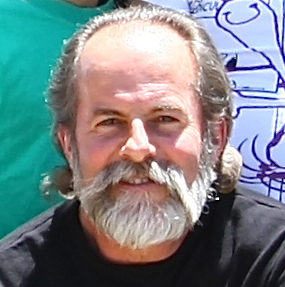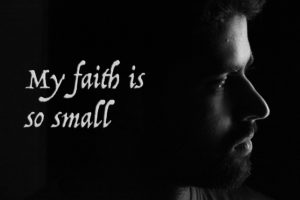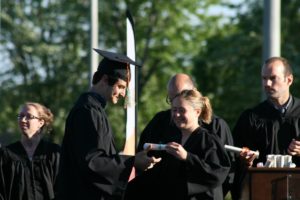Sight introduces knowledge
The apostle Paul—inspired by the Holy Spirit—asserts that without spiritual sight the acquisition of Christian knowledge becomes impossible. Here is what the wrote:
Therefore I also, after I heard of your faith in the Lord Jesus and your love for all the saints, 16 do not cease to give thanks for you, making mention of you in my prayers: 17 that the God of our Lord Jesus Christ, the Father of glory, may give to you the spirit of wisdom and revelation in the knowledge of Him, 18 the eyes of your understanding being enlightened; that you may know what is the hope of His calling, what are the riches of the glory of His inheritance in the saints, 19 and what is the exceeding greatness of His power toward us who believe, according to the working of His mighty power…” (Ephes. 1:15–19).
Here Paul is saying that the eyes of our understanding must be enlightened in order to know. According to him without this sort of sight we are precluded from Christian knowledge. As I have written elsewhere, as useful as the human brain can be it cannot yield the knowledge of the Holy, that knowledge is reserved for those who have crossed the threshold of a consecrated life.
God’s confirmation
God Himself attests the same thing. Speaking through the prophet Isaiah he says:
I will plant in the wilderness the cedar and the acacia tree, the myrtle and the oil tree; I will set in the desert the cypress tree and the pine and the box tree together, that they may see and know, and consider and understand together, that the hand of the Lord has done this, and the Holy One of Israel has created it” (Isaiah 41:19,20).
Here we have it clearly stated: “that they may see and know”. Sight is, and always will be, an indispensable prerequisite of Christian learning. That is the reason why the blind has little to say to a people in need of direction.
In the Book of Jeremiah we also read: “Run to and fro through the streets of Jerusalem; see now and know … ” (Jer. 5:1).
As for Isaiah, he declares: “They do not know nor understand; for He has shut their eyes, so that they cannot see, and their hearts, so that they cannot understand” (Isaiah 44:18). Knowledge is here related to the eyes and understanding to the heart.
One thing is certain: The Christian who is spiritually blind will not attain Christian knowledge. Even if he reads the Bible five hours a day, goes to church twice a week, and frequents a Bible school for four years, if he doesn’t have spiritual sight he is doomed to vegetize on the shore of knowledge as an empty seashell, full of sandy information as lifeless as the moon.
Words are not sufficient
A few decades ago I asked a Spanish brother if he could translate a poem of Amy Carmichael into Spanish. The poem is called Fire Words. The brother answered me affirmatively only to return a few days later telling me he understood all the poem except its first part, which reads:
“O God, my words are cold:
The frosted frond of fern or feathery palm
Wrought on the whitened pane—
They are as near to fire as these my words;
Oh, that they were flames!”
Thus did I cry.
He didn’t know what these words meant for he had never seen the artful designs the frost can create on a window. For people coming from the north the reference made by Carmichael is clear and obvious, but not so for a person who has never seen a frosted pane. The Bible is not different. There are meanings that will not be known until the reader sees the frost on the window so to speak, the substance of the heavenly as opposed to its mere description.
The principle exemplified
There is a story in 2nd Kings which epitomizes what we have seen so far. It has to do with the servant of Elisha. The king of Syria was enraged against the prophet and intended to capture him.
Therefore he sent horses and chariots and a great army there, and they came by night and surrounded the city. 15 And when the servant of the man of God arose early and went out, there was an army, surrounding the city with horses and chariots. And his servant said to him, “Alas, my master! What shall we do?” 16 So he answered, “Do not fear, for those who are with us are more than those who are with them” (2 Kings 6:14–16).
The servant of Elisha expected a normal day. He got up calmly, went out of the house, and suddenly his facial expression changed. Fear took hold of him and doubts invaded his heart, for he could see the Syrian army surrounding the city. So he rushed back in and told his master what was happening: “Alas, my master! What shall we do?”
The poor servant didn’t know where to begin. So Elisha went to the door, looked out and smiled. “Do not fear, he told his servant, for those who are with us are more than those who are with them.” So at the words of Elisha the servant regained courage; boldness and peace filled his heart and tranquility took over his worry mind. Is it what happened? NO! A thousand times NO! Elisha knew his words were not sufficient, so he prayed:
Lord, I pray, open his eyes that he may see.” Then the Lord opened the eyes of the young man, and he saw. And behold, the mountain was full of horses and chariots of fire all around Elisha” (2 Kings 6:17).
Only when the servant saw did he apprehend knowledge. Elisha could have filled his head with information, but it would not have been sufficient. His servant needed to see in order to know. What about us? (Part two)

If you think this post can help somebody else you can share it with the options presented bellow.













